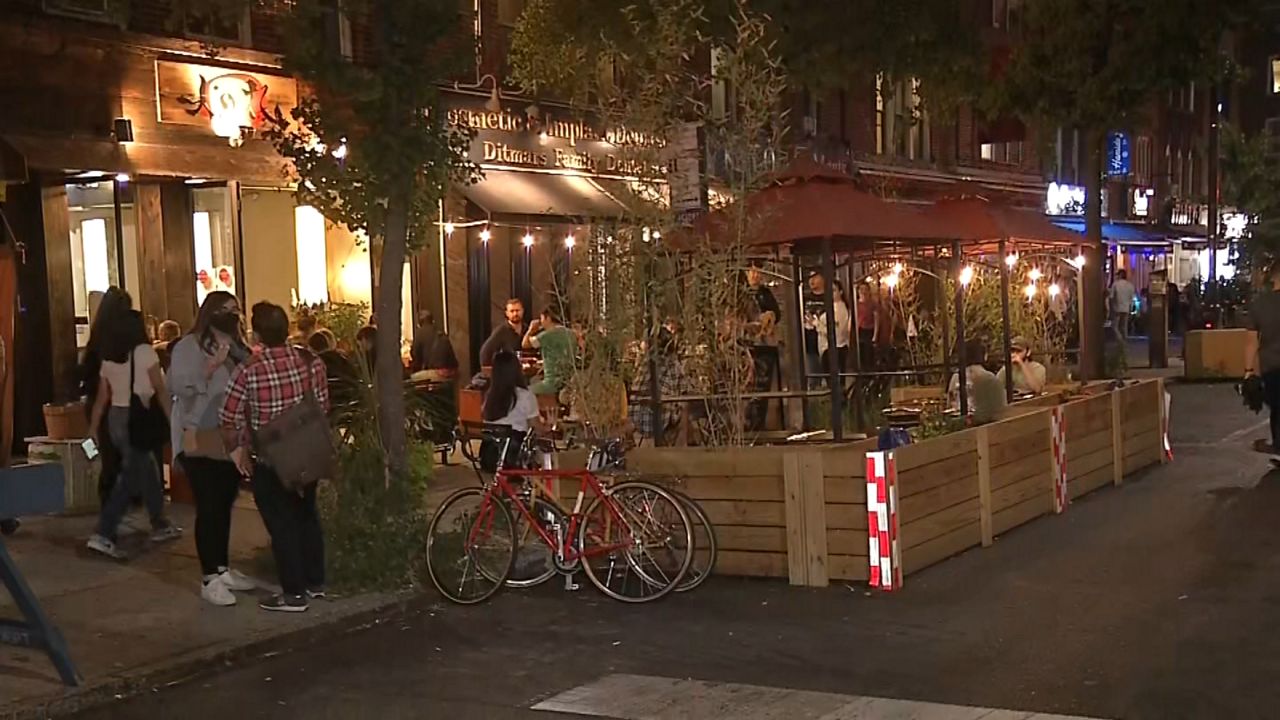The Municipal Council decided to legalize the terraces of establishments such as restaurants and cafes, created after the start of the covid-19 pandemic in 2020, and thus allow the majority to remain on the streets of the city, although with new conditions.
The Council approved by a majority a law that has caused division and that allows the permanence of the thousands of structures that occupy part of the sidewalks and roads, but in exchange it imposes licenses, fees and hourly and seasonal restrictions on restaurants.
Mayor Eric Adams supported passage of the law.
Faced with 34 positive votes, eleven representatives voted against, such as Christopher Marte, from Lower Manhattan, where many terraces are concentrated, who argued that they harm the working class because, he said, they are used by “gentrifiers who are partying” and do not let put the neighbors to sleep
According to the measure, establishments will have to remove their modules from the roads -not from the sidewalks- during the coldest months, from November 30 to March 31, which for many will mean an added cost to the high cost of building them, in addition that this will mean fewer customers in that period.
The structures are varied according to the investment of their owners, but in general they are modules sheltered from pedestrians and road traffic; some are true works of architecture, with more or less closed rooms that have lighting, heating and decoration, while others are fragile cubicles delimited by thin wooden sheets.
The establishments will also have to pay a fee for their terraces depending on the location, the most expensive area being the one that covers the district of Manhattan, approximately from Harlem to the extreme south, where Wall Street is, indicates the voted text.
The law had been in the air for months, since it depended on the end of the emergency order due to covid-19 that gave the green light, in the first place, for establishments to install terraces when it was prohibited to consume inside, and that it was extended successively.
A PHENOMENON CONCENTRATED IN MANHATTAN AND BROOKLYN
The Department of Transportation, which oversees the program, estimates that there are up to 12,000 establishments with terraces, although they are not evenly distributed throughout the city: almost all of them are concentrated in Manhattan, the most touristic and high-income district, and in parts of Brooklyn.
Although the terraces have been well received by the public and have been a lifeline for businesses, their structures also have detractors, who have criticized that they are neglected, shelter the homeless and attract rats; in addition to generating noise and stealing space to park or walk.
Organizations in the restaurant sector such as the NYC Hospitality Alliance and Open Plans expressed their satisfaction with the approval of the law, which will come into force when signed by Mayor Eric Adams, and which represents a “new era” for the city, which “reclaims spaces for people”.
Mayor Adams has been an outspoken champion of this legislation.
“This bill keeps the best parts of the temporary program and eliminates the worst,” Adams said in a statement.
“We will create a vibrant, clean and safe urban landscape; give restaurants the clarity they need to continue serving their customers; and make New York City the best city for outdoor dining in the world.
“I am grateful to the restaurant owners, community leaders, and ordinary New Yorkers who have fought for this program for years, and to Councilmember Marjorie Velázquez and the City Council for their partnership for ‘Get Stuff Done,'” the mayor concluded.
2023-08-03 16:17:00
#City #Council #approves #law #outdoor #food #facilities
